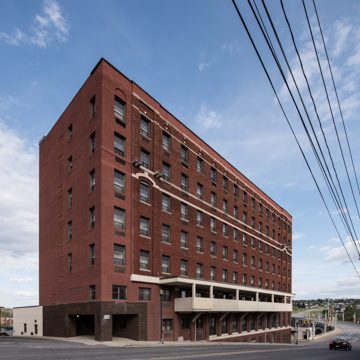You are here
East View Apartments (Fairmont Hotel)
Late in 1915, members of the Watson family promised to provide two-thirds of the estimated $300,000 cost of a first-class hotel if Fairmont's citizenry would guarantee the rest. Within two days, the challenge was met. Former U.S.
Senator Watson proved a good prophet. The original hotel had 150 bedrooms, but in 1920, only four years after construction began, the same architects added two additional floors with both hotel rooms and apartment suites. The provision for apartments was prescient: after the hotel closed in 1984, the building was converted into the East View Apartments. It stands as an enduring symbol of Fairmont's early-twentieth-century aspirations.
Writing Credits
If SAH Archipedia has been useful to you, please consider supporting it.
SAH Archipedia tells the story of the United States through its buildings, landscapes, and cities. This freely available resource empowers the public with authoritative knowledge that deepens their understanding and appreciation of the built environment. But the Society of Architectural Historians, which created SAH Archipedia with University of Virginia Press, needs your support to maintain the high-caliber research, writing, photography, cartography, editing, design, and programming that make SAH Archipedia a trusted online resource available to all who value the history of place, heritage tourism, and learning.




















